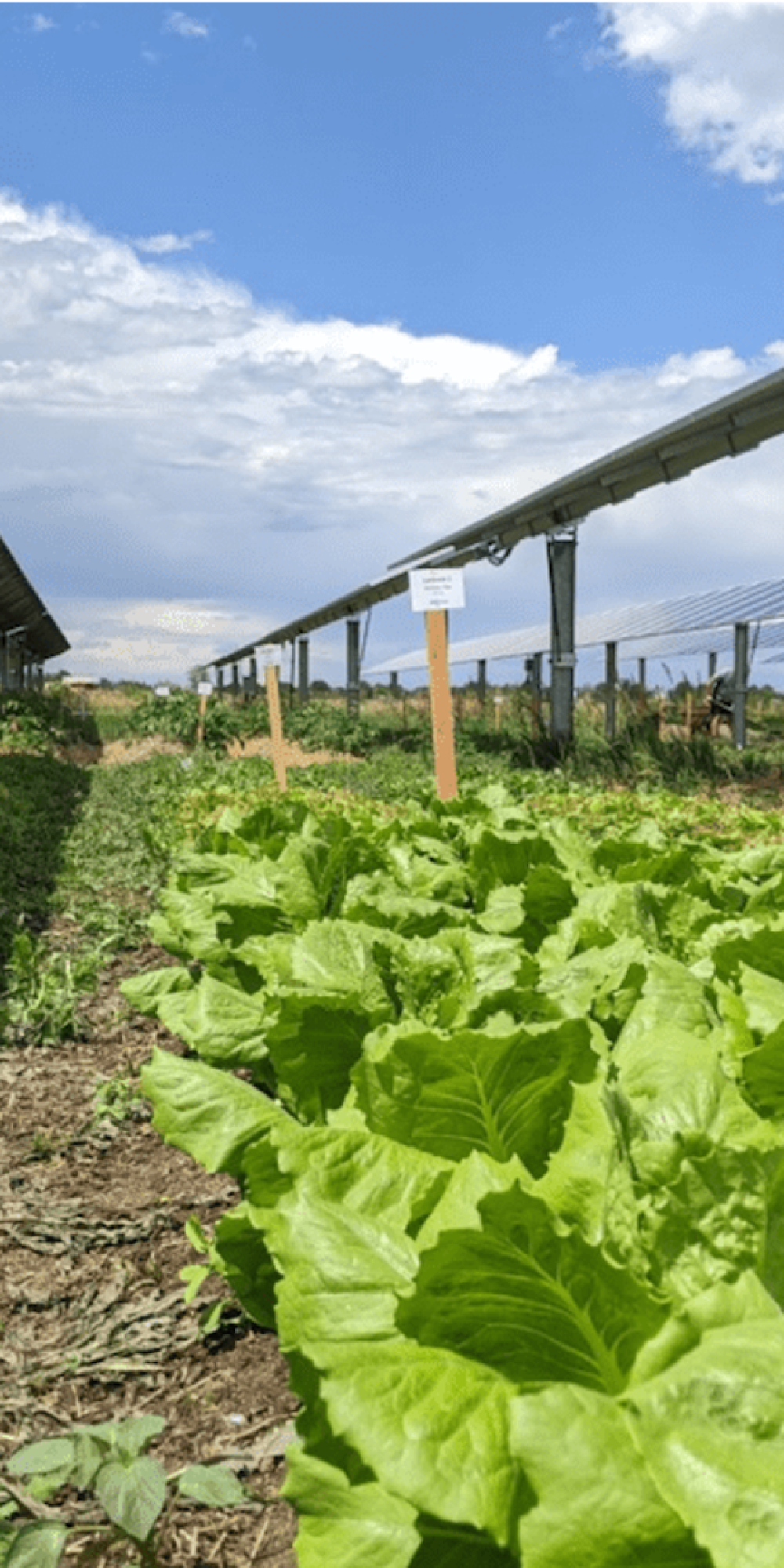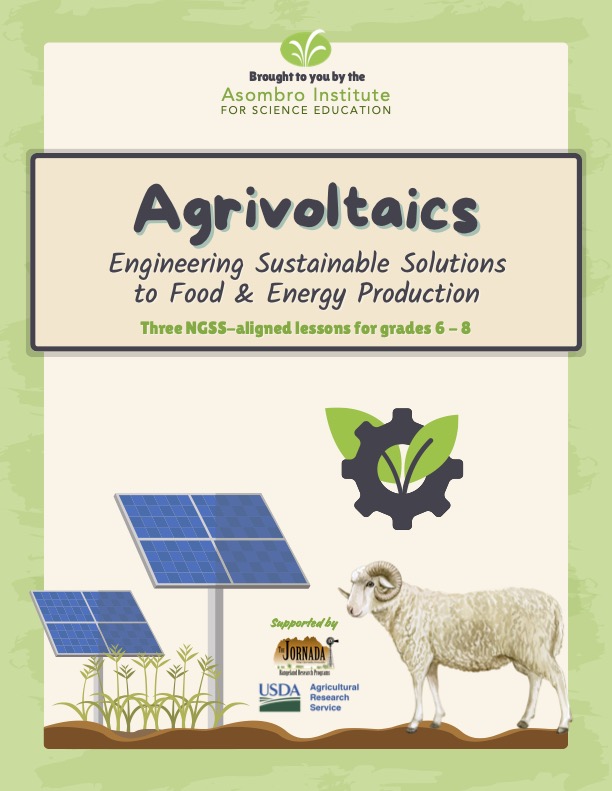Agrivoltaics: Engineering Sustainable Solutions to Food and Energy Production

This three-lesson module introduces students to agrivoltaics, the dual-use of land for agriculture and solar energy production. In these lessons, students will apply science and engineering practices and crosscutting concepts through an agricultural lens and consider the pros and cons of implementing agivoltaics as a solution to extreme heat and drought.
The lessons were developed with financial and scientific support from scientists at the USDA-ARS Jornada Experimental Range and Southwestern Cotton Ginning Research Laboratory. The lessons do not try to prove the effectiveness of agrivoltaics, but give they students information to help them decide the pros, cons, and situations in which it might be most effective.
Lessons can be taught individually or as a module. These lessons were designed for middle school but can easily be scaled for high school.
Download the entire curriculum below.

Lessons
Students will be introduced to agrivoltaics, the dual use of land for agricultural and energy production. They will analyze the pros and cons of adding solar panels to farms and ranches in different locations and with different agricultural products.
MS- ETS1-1 Define the criteria and constraints of a design problem with sufficient precision to ensure a successful solution, taking into account relevant scientific principles and potential impacts on people and the natural environment that may limit possible solutions.
One potential benefit of agrivoltaics is that it can increase shade over crops, thereby reducing the negative effects of high temperatures and reduced rainfall. In this lesson, students will use a model solar panel and spinach leaves to test the effects of shading from a solar panel on plant transpiration. They will use solar beads and a flashlight to investigate the potential effects of solar panels on photosynthesis.
MS-ETS1-2 Evaluate competing design solutions using a systematic process to determine how well they meet the criteria and constraints of the problem.
Students play the role of solar engineers as they test two factors that can affect solar panel efficiency: air temperature and angle of sunlight.
MS-ESS3-3 Apply Scientific principles to design a method for monitoring and minimizing a human impact on the environment.
Explore more Asombro lessons on climate change and agriculture on our Free Resources page.
